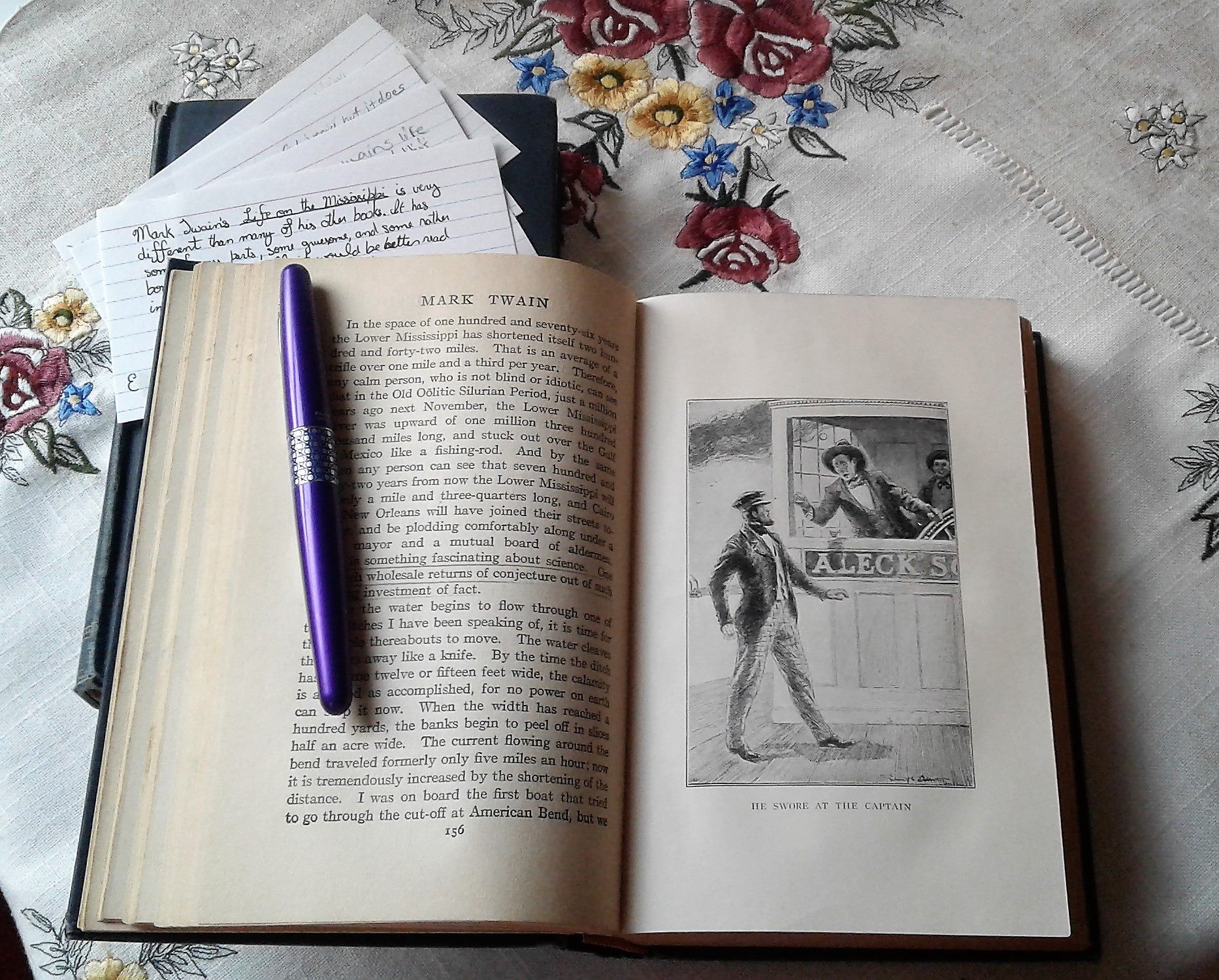This part of Diane’s Literature Course I Series
I didn’t get time to read Mark Twain’s Life on the Mississippi before I had to decide on my Literature Course I syllabus this past school year. I did get through the first couple of chapters, which are full of the geography and history of the Mississippi River. I hoped that, if Twain continued in that vein, it would make a good historical backdrop to our literary journey through our country’s history. That aspect wasn’t a complete loss, but this book is more a rambling memoir interspersed with short stories than a history.
Because the book is fairly long and I was unfamiliar with the content, I decided to assign two chapters of Mississippi each week along with the main literature selection. There are 60 chapters, so this worked out beautifully. We finished the book in our last week of class.
We didn’t have much discussion about it by that time, since we had talked about it week by week. What we did all agree on was that we were glad to have read it, but were also glad to be done. I handed out note cards and asked each girl to write a short review.
This book can be quite confusing at times. Such as the part where Mark Twain jumps from a story to some facts. I would not recommend reading this book all at once, but it is still a book worth reading. GB
Mark Twain’s Life on the Mississippi is very different than many of his other books. It has some funny parts, some gruesome, and some rather boring parts. Over all, it would be better read in sections than the whole selection at once. EW
If you are going to read Mark Twain’s Life on the Mississippi, I recommend you read this book in sections, not all at once. Also, do not let a child under nine years old read this without you going through it first. BB
This book is a good source of history, but it does include some pretty gruesome (and random) tales. If you are an experienced reader, you may enjoy this book. If you are not, this book will be difficult to concentrate on. LW
I think the most interesting parts for my girls were the stories of Twain’s early days learning to pilot the riverboats. His reminiscences are a blend of tall tales, his signature brand of exaggeration, vivid characters, and factual details. At times, his description of the River includes mile by mile (or yard by yard) details that a pilot had to have memorized so thoroughly that he could find his way in the dark. Much of the humor is in his arrogant and disastrous refusal to believe that it was necessary to learn the River so minutely.
Some chapters are legends from a particular area. At one point he begins to recount a trip on the River twenty years or so after he had become a successful writer. Since he travels incognito, the river pilots try out their tall tales on him just as he would have done to citified passengers in his piloting days. He also returns to his hometown without revealing his identity, and gets to hear what people say about him to strangers. His experience is much like when Tom Sawyer goes to his own funeral.
Fellow book lovers and I have often commented about how our books talk to each other. It can be even more fun when our favorite authors actually talk to or about each other. Some of those Twain mentions and assumes will be familiar to his readers didn’t achieve the enduring fame of Twain himself. The name George W. Cable was familiar to me, for some reason, but I had to look him up to see what he wrote. However, I had read some Uncle Remus stories in class, so the girls were familiar with Joel Chandler Harris when Twain mentions knowing him. Twain also has some things to say about Charles Dickens’s observations in his American Notes. Of course, he didn’t know Sir Walter Scott, but Twain blames the Civil War on Scott’s stories of chivalry. It shouldn’t have surprised me when he described someone as having a Frankenstein smile. Twain read Frankenstein? But, of course!
The gruesome parts the girls refer to include a legend about a dead baby, deaths in accidents, and stories about murders. I would modify BB’s assessment and advise pre-reading or read-aloud editing for children under 12.
I am glad to have read the stories of Twain’s River days, but I could happily have cut out some of the rambling observations on how every town on the Mississippi had changed in his 20-year absence. I agree that this book is best read in small bites.

One Comment
Comments are closed.